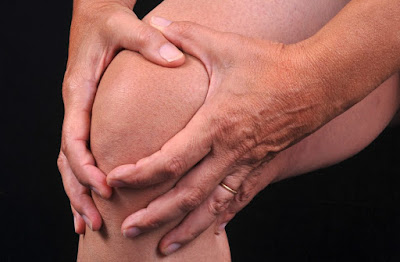Microphone could diagnose "noisy" arthritic knees
Microphone could diagnose "noisy" arthritic knees
One study suggests that the technology used by engineers to detect bridge defects could be used to diagnose "noisy" arthritic knees.
It was a tiny microphone attached to the participants' knees to pick up high frequency sounds.
Although not audible to humans, waveforms can be analyzed by computer to provide insight into knee health.
A better diagnosis of osteoarthritis and more appropriate treatments are possible, the researchers said.
But they recognized that first more research and testing was needed on more people.
Osteoarthritis of the knee is a common degenerative condition of the joint that can lead to pain, stiffness and swelling of the joint.
Normally, the body can repair low-level joint damage - but in case of osteoarthritis, the protective cartilage at the ends of the bones is degraded and can not repair itself.
What does your knee look like inside? E
Knee pain? Maybe you have a fabella
The man with a 'brain' in the knee
Most new hips and knees last 25 years
In this study, involving Lancaster University, Central Lancashire University and the University of Manchester, the researchers "listened" to the noise produced by the knees of 89 adults with osteoarthritis.
They were all asked to get up from a sitting position five times while the acoustic signals of their joints were recorded.
They assumed that the knees would act as technical structures: "smooth and well lubricated surfaces" moving silently against each other and "irregular movements of rough and poorly lubricated surfaces" generating acoustic signals.
Their results showed that the technique could "hear" the difference between the signals produced by healthy knees and those with osteoarthritis.
Professor John Goodacre of Lancaster University, who led the study, said it was a promising technique.
"The current way of classifying knee osteoarthritis is gross, usually involving an X-ray, and the situation can change in a few months.
"It's a finer and more sensitive way to assess gravity without using an X-ray."
Knee
The research team, which published its findings in PLOS One, found that the more visible "hits" on the knee waveforms, the more "noisy" the knee was and the more osteoarthritis was severe.
Although it is not possible to listen to these sounds with the human ear, it is possible that each knee has its own "melody", said Professor Goodacre.
Audible sounds or creaks or sensations in the joints can also be a symptom of osteoarthritis.
According to Professor Goodacre, this technique could lead to more personalized treatments, adapted to the particular characteristics of the knee condition.
He added that with more research, the new approach could be used as a diagnostic tool allowing athletes to avoid injury - and to determine if patients' knees were responding to treatment.
The technology has not yet been tested on other forms of osteoarthritis, hip or hand, for example.

